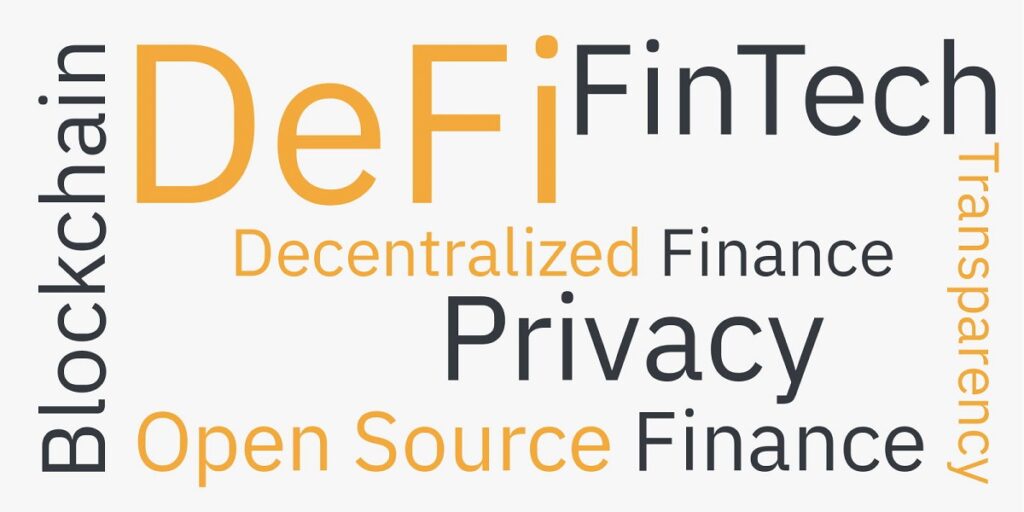
A Short History of Decentralized Exchanges And The Future
Decentralized exchanges (DEXs) have been experiencing unprecedented trading volumes in the past few months as more and more crypto investors are moving away from centralized trading platforms to more secure, decentralized alternatives.
While most decentralized trading currently occurs on the Ethereum blockchain, it is becoming increasingly evident that the future of DEXs will not be exclusive to Ethereum.
Scalability issues, lack of clarity, and expectations regarding ETH 2.0 and the lack of layer 2 adoption contribute to a situation where the ecosystem can’t move forward.
Decentralized Trading: Then and Now
In the early days of DEXs, decentralized trading was slow, clunky, and virtually only reserved for the very tech-savvy. The first real use case for DEXs emerged during the ICO boom in 2017, where they became a go-to source of liquidity for newly-issued tokens that were not supported by major exchanges.
Investors looking to exit positions in unsuccessful ICOs typically opted for DEXs to sell their holdings as top-tier exchanges were usually not an option.
Following the ICO bubble bursting, DEXs evolved to become more user-friendly, secure, and a popular choice for Ethereum token holders to convert digital assets.
Fast-forward to today, and we have DEXs with incredibly user-friendly UIs that anyone with basic knowledge of using an Ethereum wallet can utilize to exchange one token for another. Privately, securely, and seamlessly – just as the luminaries of decentralized trading had envisioned it.
Moreover, DEX Aggregators have emerged to allow traders to source liquidity from a wide range of decentralized trading venues using one single interface.
According to crypto research firm Messari, around 20% of DEX trading volumes now comes from DEX Aggregators, highlighting the strong demand for easy access to liquidity in the DEX landscape.
However, a new challenge appeared on the DEX scene in 2020: ballooning Ethereum gas fees.
The Unchained Future of Decentralized Trading
The DeFi boom of 2020 has shown that the current version of the Ethereum protocol is struggling to cope with the high number of transactions, resulting in elevated gas fees and slow transaction times.
With normal transactions regularly costing more than $10 in gas fees, decentralized trading has become too expensive on Ethereum for many market participants.
Want an easy step-by-step system to earn crypto daily?
Click here
Sophisticated smart contracts often cost more than $100 to execute for the most menial of combinations. If you are going to enter a super complex position, it may cost thousands of dollars.
Yield-farming and other hyped-up activities are consistently producing immense pressure on the Ethereum Network.
Therefore, decentralized finance protocols are increasingly looking towards other blockchains – such as Binance Smart Chain or EOS – that may be more suited to handle high transaction volumes. In light of these trends, the future of decentralized trading is poised to become multi-chain.
In a multi-chain DEX landscape, crypto investors will be able to deposit an Ethereum-based token and then trade it against tokens across several blockchains.
For example, an ETH holder could convert his Ethereum token into BNB, running on Binance Smart Chain, which then automatically settled into his Binance Smart Chain-supporting wallet.
Fixing the issue via multi-chain solutions
What if there is a way to take advantage of all of the great things about Ethereum, involve other blockchains, and remove all current weaknesses, all while keeping everything on-chain and free?
Enter ZeroSwap, a project that promises to deliver exactly that.
This on-chain trading protocol claims to have developed a methodology that will enable liquidity mining, DeFi Token Offerings, and DEX aggregation, across more than one blockchain, all at zero cost per transaction.
It’s still experimental, but it might just work!
Bitcoin was an experiment, Ethereum was an experiment, and Ripple unfortunately still is an experiment. The point is, we don’t know how things are going to turn out, mainly because everything is driven by the choices made by the community.
DeFi happened because of the community and any changes moving forward will happen because of the community accepting and using solutions.
Whether it be layer 2 adoption or wrapped ETH and DeFi tokens that will be the next thing, we can’t really predict.
What we can say is that we like the idea of free gasless transactions, and ZeroSwap is promising. The project is partnered with Elrond, Covalent, and Frontier for now, and is expecting its token launch via Uniswap and Mooniswap. Liquidity will be added and anybody can pick up the tokens as they desire.
ZeroSwap has been marketed as a “Unanimous governance mechanism to adapt decentralized network changes over time,” however we will have to wait and see how they decide to implement these systems.
Most DAOs at the moment use DAOstack, Aragon, or Moloch as their platforms on which they are created.
Not much is known about ZeroSwap’s intentions regarding the governance side of things, however, they have raised $2.2 million from investors to work on the project and they are providing liquidity to a trading pair on a decentralized exchange. What could go wrong?
The best thing you can do, if you find this project interesting is to visit their official website and make a decision for yourself.
Ready to trade in the financial markets like a Pro?
>> Learn how fortunes are being made every day